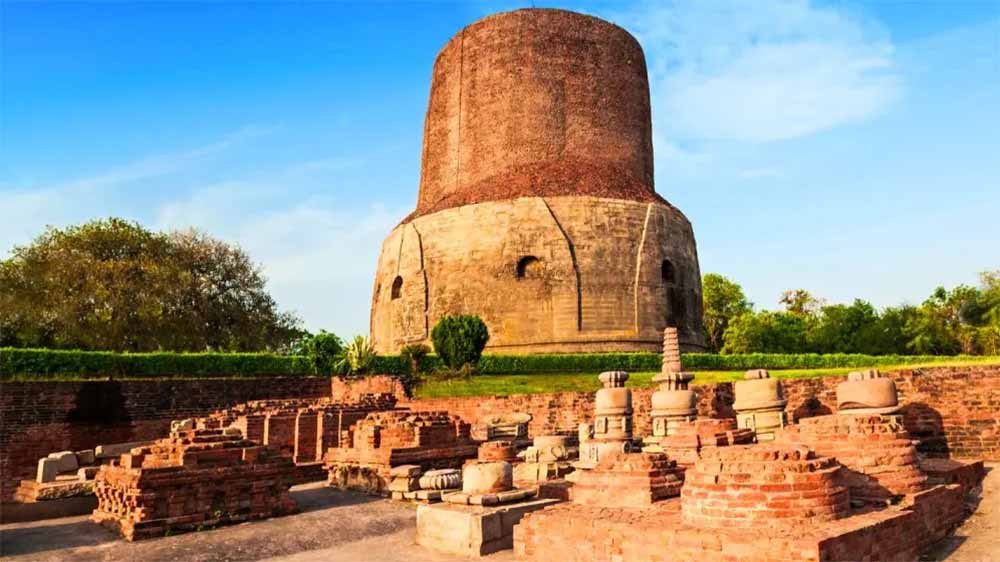Context:
The Ancient Buddhist Site of Sarnath has been officially submitted as India’s nomination for the UNESCO World Heritage List for the 2025–26 cycle. The nomination dossier was prepared and submitted by the Archaeological Survey of India (ASI).
About Sarnath:
Located near Varanasi in Uttar Pradesh, Sarnath is a site of immense historical, religious, and cultural importance.
Sarnath is where Gautama Buddha delivered his first sermon after attaining enlightenment, making it a central location in the Buddhist world. It is one of the four holiest sites of Buddhism, along with Lumbini, Bodh Gaya, and Kushinagar.
Key features of Sarnath include:
- The Dhamek Stupa, dating back to 500 CE
- The Ashokan Pillar with the Lion Capital, India’s national emblem
- Ruins of ancient monasteries and temples spanning the Mauryan to Gupta periods
Sarnath’s nomination reflects India’s ongoing effort to protect and promote its tangible cultural heritage on the global stage.
About UNESCO World Heritage Sites (WHS):
A UNESCO World Heritage Site (WHS) is a place recognised for its “Outstanding Universal Value”, reflecting cultural, natural, or mixed significance for humanity. These sites are protected under the World Heritage Convention, adopted in 1972 and effective from 1975, with India ratifying it in 1977.
WHS fall into three categories:
1. Cultural – monuments, groups of buildings, archaeological sites
2. Natural – natural features, geological formations, ecosystems
3. Mixed – both cultural and natural importance
Selection Criteria:
To qualify, a site must meet at least one criterion among ten, including:
· Representing human creative genius
· Showcasing historical or cultural importance
· Exhibiting ecological or geological significance
· Containing exceptional natural beauty or biodiversity
Other factors include authenticity, protection, management, and integrity.
About World Heritage Committee (WHC):
- The World Heritage Committee (WHC), composed of members from States Parties (including India), manages the list. It meets annually to add, modify, or delist sites and can also place threatened sites on the World Heritage in Danger list.
- India hosted the 46th WHC session in New Delhi (July 2024). At this event, ‘Moidams’ of the Ahom Dynasty were added as India’s 43rd World Heritage Site.
- The World Heritage Fund (est. 1977) supports conservation efforts via contributions from member states and private donors.
Conclusion:
Recognition as a UNESCO World Heritage Site would not only enhance Sarnath's global reputation but also promote cultural diplomacy and tourism development. This move aligns with India's efforts to recognize and conserve sites of historical, spiritual, and architectural significance across the country







